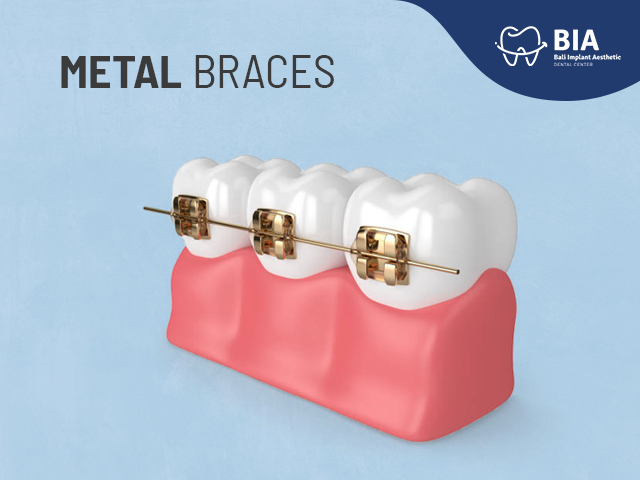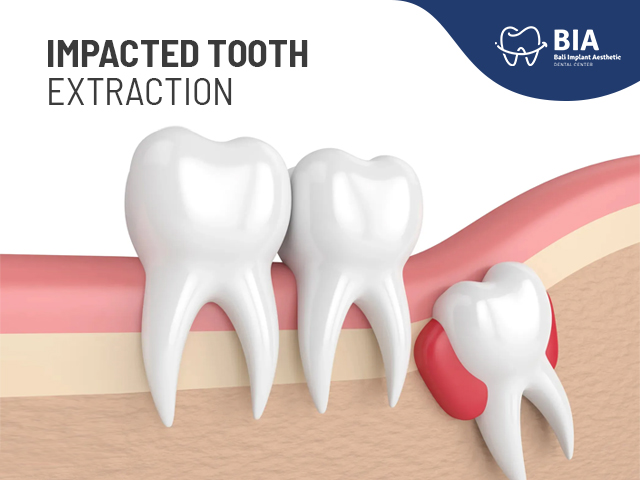Metal Braces vs. Invisalign
Article | 2019-12-20 00:17:04
Straightening your teeth does more than just give you a beautiful smile. While it’s a plus, and often the main reason people choose to straighten their teeth, there is much more that goes on behind the scenes that will benefit your overall oral health. Straight teeth are often easier to clean, which helps stave off cavities. They can also help correct your bite, aligning your teeth and jaw.
Metal Braces vs. Invisalign: What’s the difference?

Both Invisalign and traditional metal braces work towards giving you the same result - straight teeth and improved oral health. So what makes them different? The key to their differences lies within the process of how they straighten your teeth. Determining which is better for you will depend on your needs and preferences. You can contact Bali Implant Aesthetic (BIA) Dental Center at Kuta, Bali if you are considering braces as an option to improve your smile and get all your personal questions answered by someone who knows your teeth best.
Metal braces: This is what people typically picture when they think of getting braces. Metal brackets are glued to the enamel of each tooth. Metal wires are then maneuvered between the brackets to help mold and shape your teeth over time. The wires being placed on the bracket can sometimes be made the same color as your enamel, so they’re less noticeable. Or, patients can choose from multiple colors to have a bit of fun with their braces - perfect for teens!
Invisalign: The basis of Invisalign gives patients the option to have braces discretely because they are made to be invisible. Invisalign uses aligner trays made of BPA-free plastic to subtly and gradually move your teeth. This type of plastic is smooth and comfortable, so wearing the trays is an easy process. Rather than using a mold, Invisalign uses a 3D image of your teeth to configure aligner trays with just the right fit.
Benefits of Metal Braces
It’s best to consider a list of what makes metal braces a good option depending on your case.
Irremovable: Metal braces will stay in place, which is good for patients who are worried about losing their trays, or don’t want to have to change their trays out frequently.
Treatment time: Because metal braces are irremovable, the treatment time can often be much quicker than Invisalign depending on what the patient needs. They are worn 24 hours a day, 7 days a week, and typically stay on for about 2 years for most patients. There is also less temptation to take the braces off if they can’t be removed, which is good for patients that lack self-discipline.
Cleaning: Cleaning teeth with metal braces is generally easier as it just requires regular brushing and flossing, just like you would without them.
Follow up visits: Generally, you should visit your Dentist every month for a check-up. This is where your dentist will see how your teeth are shifting and may adjust the wires accordingly.
Cost: The price of metal braces ranges from patient to patient. Generally, patients can expect to spend anywhere from $1,800 to $5,500.
After-care: Once you’ve completed your treatment, it’s important to keep all that hard work intact. A positioner or retainer is used to keep the teeth in form and is usually worn every night.
Effectiveness: Patients with fairly complex dental issues may want to consider traditional metal braces as an option.
Benefits of Invisalign
Appearance: Most patients tend to prefer Invisalign because the trays are clear. This can be great for adults who have been wanting to straighten their teeth for a while but have hesitated due to the appearance of having metal braces at an older age. With Invisalign, many people may not even notice when a patient is wearing them. Your treatment is a secret!
Comfort: The Invisalign treatment can be a bit more comfortable than metal braces, as there are no brackets that can create sores in your mouth.
Treatment time: Invisalign should be worn about 22-24 hours a day for 6 to 18 months. This will also depend on the patient’s needs and if patients have more complex dental issues metal braces may be a better option.
Cost: Invisalign averages around $5,000 for treatment.
Cleaning: You can clean Invisalign trays with an Invisalign cleaning system, or by brushing and rinsing the trays in warm water. This should be done after you eat or drink anything besides water, and at morning and night.
Follow up visits: Different trays will keep your teeth moving at a gradual pace, and you should typically change the trays every 2 weeks. Visiting your dentist should happen every 4 to 6 weeks.
What are the downsides to Braces vs. Invisalign?
Metal Braces: Metal braces may not be good for people in contact sports, as the metal can potentially damage tissue upon contact.
Invisalign: Patients that have bridgework, back tooth bite issues, the need to rotate canines or premolars may not be suited for the Invisalign treatment.
Comparing these two treatment options can be tough, as there are both positives and downsides for each. The decision for metal braces or Invisalign really comes down to you, the patient. Each patient’s needs and preferences are unique and special. If the appearance of metal braces has been holding you back from a straighter smile, Invisalign could be a great option. This is especially true for teens that are perhaps self-conscious of wearing braces, or adults that need them later in life. Invisalign is often used for adults who didn’t maintain their smile with a retainer when they had braces as a teen, or never got the chance to straighten their teeth, to begin with.
However, metal braces can be a great option as there is less of a worry for self-discipline. With this kind of treatment, patients are able to straighten their teeth without the inconvenience of changing and cleaning trays frequently. The success rate of Invisalign is largely dependent on the patient themselves. If you don’t wear the trays, straightening will occur much more slowly, if at all! Metal braces may also be the only option in some cases. If the issues with your teeth are much more complex and need to be moved a particular way, Invisalign may not be an option.






